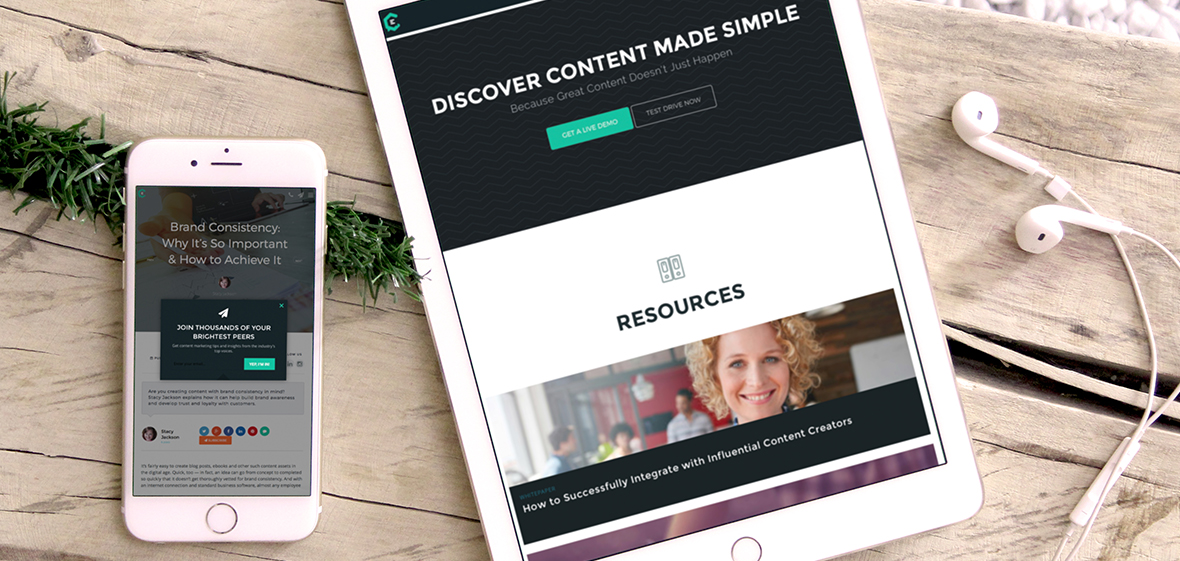In a marketing world full of B2B, B2C, KPI, ROI, and buzzwords galore, it can be difficult to remember that what we’re working toward is a human connection with our customers. Marketers connect people to products that improve their lives, solutions that simplify their business, or ideas that simply make them feel good.
If you’re looking to improve your customer buyer journey, you need to examine the many ways a person can interact with your brand. Then use this information to better humanize your brand with elements that create a more personalized experience with your company. This post shows you how.
Start by researching the sentiment around your brand
This means thinking beyond your website, blog, advertisements, social contributions, and both paid and owned media — taking a more holistic approach.

Earned media, whether positive or negative, provides touchpoints that can throw a curveball into each stage of your customer’s journey. Monitor and respond to these earned media mentions in an appropriate and human manner. Read all third-party reviews and mentions, look at any criticism leveled against you and participate in online discussions. To do this:
- Set up Google Alerts to receive notifications when your brand is mentioned on the web — this helps you understand where your brand is being talked about and gives you a heads-up to respond
- Similarly, use social listening tools to discover when your brand is being mentioned on social media
- Scour discussion boards and review sites such as Quora, Yelp, Amazon and other applicable sites
According to Jay Baer in his book, Hug Your Haters, “Participation in discussion boards and forums creates more consumer advocacy than any other channel of customer service.” Participating in the discussion outside your website and owned media channels will help you understand more about audience sentiment.
Convince leadership to focus on relationships
This is often a controversial and difficult mindset for many marketers to understand. On one hand, we live and die by conversions and need them to prove our value; on the other hand, people do not like to be sold to, and they shouldn’t always be considered as a data point or a conversion metric. They’re real people like you and me.
While we need landing pages, lead generation, conversion campaigns and sales numbers, there are ways to soften the process and add human interaction.
Humanity should be baked into your company culture, brand guidelines and mission statement to serve as a point of reference for your ongoing marketing and communications efforts. It starts from the top with the leadership team and key shareholders. But what does that mean, and how do you accomplish that?
Begin by asking your key shareholders and company-wide decision makers to open the discussion around your brand guidelines. Are they open to updating any policies that don’t facilitate such openness? Explain how making changes could help you achieve marketing and sales goals.
For example, consider how your target audience communicates and what they value in their lives. How can improving their experience through more personalized, human marketing increase sales, leads or other objectives? Think improved engagement, better feedback, stronger research, higher close rates, etc.
Next, plan to incorporate more human elements into your branding documents and company as a whole. Remember that humanized branding comes back to the basics and virtues of humanity as a whole.
Ask your team the following questions to get the conversation started:
- How can we be more honest with our customers through our communication?
- In what ways can we be transparent in our marketing intentions?
- Are we truly authentic when it comes to promoting our brand?
- Are we empathetic toward our customers’ needs, or are we concentrated on the sale only?
- Can we be more vocal and courageous in our content marketing strategy?
- How can we prove that we are a trustworthy and genuine organization?
After outlining, updating and documenting your brand and communication guidelines, the next step is to share them with your organization and even publish them on your website. Promote your values internally through email, the company newsletter, or an in-office town hall meeting.
Remember, this project should involve key company stakeholders, leadership teams, the CEO and even company board members where applicable, as it affects the entire organization. Earning company-wide buy-in is the most critical component to your success.
Live your core values & execute with your community daily
Writing your company values and brand guidelines is the easy part — the next step is to live by these rules daily, throughout your organization. It is imperative you stay true to your word, even in difficult situations, otherwise your merit will be questioned and your brand will feel hypocritical.
One way to ensure that your core values are carefully communicated internally and externally is by hiring a community manager.
The best community managers are typically very social and love interacting with and helping a wide mix of people. They genuinely care about nurturing others — regardless of where they are in the buyer journey. They help build an emotional connection and ongoing relationship with your audience, add a human element and personality to your brand communications, and help alleviate the disconnect that robotic marketing automation can bring about.
A community manager should closely work with the marketing and sales departments to understand the company goals and help illustrate those ideas with your audience in an organic manner that aligns with your brand communication guidelines.
Community managers aren’t just for online communities, and they often work beyond the scope of your customers’ needs. They can work closely with internal communication departments to take care of employee resources, share relevant and timely insights from customers, provide highly targeted content when applicable, and overall be the go-to brand ambassador for your brand.
To engage with audiences in a more human manner, your community manager can:
- Set up phone calls to get to know potential prospects without a sales agenda
- Send customer care packages or direct mail as a thank you
- Promote, mention and share content from clients or customers
- Host in-office or online events such as Twitter chats, Hangouts and webinars
What are you doing to humanize your brand?
What have you done to add a more human element to your brand? Are you just now concentrating on humanizing each stage of the buyer journey? Share your insights and any feedback that you may have in the comments section below.







